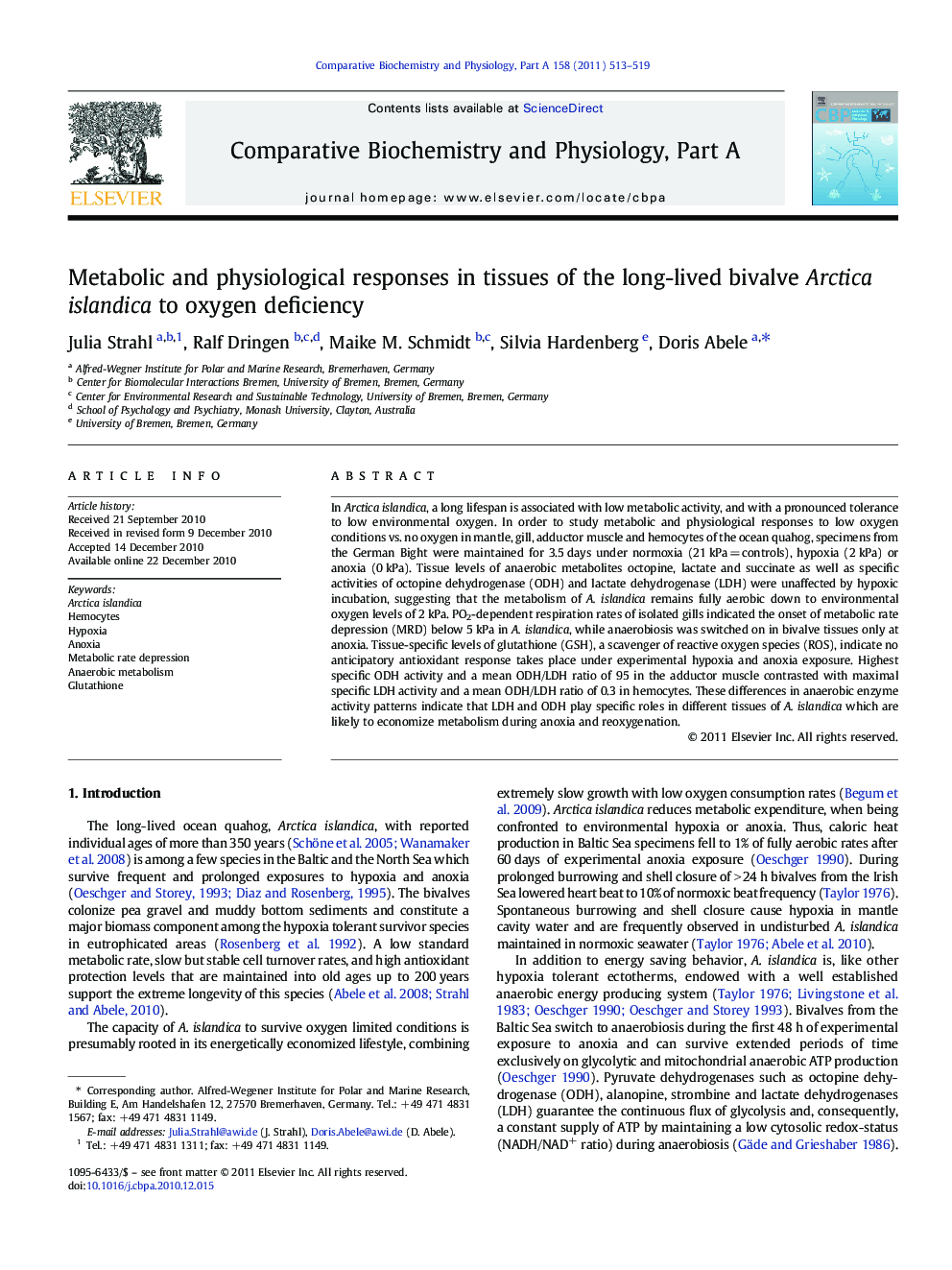| Article ID | Journal | Published Year | Pages | File Type |
|---|---|---|---|---|
| 10819027 | Comparative Biochemistry and Physiology Part A: Molecular & Integrative Physiology | 2011 | 7 Pages |
Abstract
In Arctica islandica, a long lifespan is associated with low metabolic activity, and with a pronounced tolerance to low environmental oxygen. In order to study metabolic and physiological responses to low oxygen conditions vs. no oxygen in mantle, gill, adductor muscle and hemocytes of the ocean quahog, specimens from the German Bight were maintained for 3.5 days under normoxia (21 kPa = controls), hypoxia (2 kPa) or anoxia (0 kPa). Tissue levels of anaerobic metabolites octopine, lactate and succinate as well as specific activities of octopine dehydrogenase (ODH) and lactate dehydrogenase (LDH) were unaffected by hypoxic incubation, suggesting that the metabolism of A. islandica remains fully aerobic down to environmental oxygen levels of 2 kPa. PO2-dependent respiration rates of isolated gills indicated the onset of metabolic rate depression (MRD) below 5 kPa in A. islandica, while anaerobiosis was switched on in bivalve tissues only at anoxia. Tissue-specific levels of glutathione (GSH), a scavenger of reactive oxygen species (ROS), indicate no anticipatory antioxidant response takes place under experimental hypoxia and anoxia exposure. Highest specific ODH activity and a mean ODH/LDH ratio of 95 in the adductor muscle contrasted with maximal specific LDH activity and a mean ODH/LDH ratio of 0.3 in hemocytes. These differences in anaerobic enzyme activity patterns indicate that LDH and ODH play specific roles in different tissues of A. islandica which are likely to economize metabolism during anoxia and reoxygenation.
Keywords
Related Topics
Life Sciences
Biochemistry, Genetics and Molecular Biology
Biochemistry
Authors
Julia Strahl, Ralf Dringen, Maike M. Schmidt, Silvia Hardenberg, Doris Abele,
